|
Classification Kingdom - Animalia Anatomy Simocephalus sp. are large, 3-4 mm in length, round animals that are covered in a bivalve carapace. The head, which contains a single compound eye, is not covered by this carapace but instead is surrounded by a hood (see figure 3). Attached to the head are a very small rostrum and the first antennules, which contain olfactory setae (Balcer et al. 1984). The mouthparts of Simocephalus sp. are small and they lack maxillipeds. Simocephalus sp. uses its second antennae as swimming appendages while the five thoracic legs are used for filtering food or respiration. The dorsal side of the thorax is called the brood pouch, an extension of the carapace, and is where the eggs are held (see fig. 5). While several of the members of family Daphnidae have a tail spine, Simocephalus lacks this feature. One of the most important features in differentiating between species is the post abdominal claw (see fig. 4). The difference in pectin on these claws is the only thing that separates three Great Lakes species from one another (Balcer et al. 1984, Thorp and Covich 1991). Distribution and Habitat Simocephalus sp. is found in lakes and ponds all over the world with three species living in the Great Lakes area: S. exspinosus, S. serrulatus, and S. vetulus. They are found in heavy vegetation in the littoral zone of lakes and everywhere in a pond. However, since these species live in vegetated areas they are vulnerable to habitat destruction by fish species, particularly carp (Frey 1966). Within these parameters this zooplankter can be found in water bodies ranging from temporary ponds to the bottom of the littoral zone in Lakes Erie, Superior and Michigan (Balcer et al. 1984, Cole 1983, Frey 1966). Feeding Simocephalus sp. are filter feeders that ingest any algae, protozoan, or organic detritus of the right size. The thoracic legs establish feeding currents, which bring suspended particles through the opening in the bivalve carapace. The setae on these legs remove undesirable particles from the feeding current (Balcer et al. 1984). Once the filtered food enters the carapace it is directed into the mouth by the very short first antennules. Growth and Reproduction Simocephalus sp. reproduces parthenogenetically most of the year until a trigger causes some females to produce eggs which turn into males. These animals reproduce sexually producing resting eggs that lay dormant through the winter and hatch in the spring. Click here for a diagram of the reproductive cycle of Simocephalus sp.. Young Simocephalus sp. develop directly into adults with no free- swimming naupliar stage(Balcer et al. 1984, Thorp and Covich 1991) . The juveniles go through approximately five molts before becoming sexually mature at nine days. After this point the adults still molt in order to grow but almost all of their energy goes into reproduction (Lampert 1997). 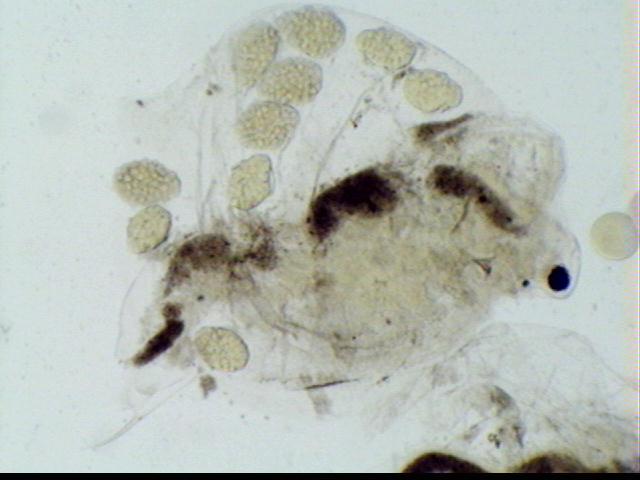
Figure 5 Simocephalus sp. The brood pouch in this picture is full of parthogenic eggs. Generally the brood pouch is held closer to the body but the preservation of the specimen caused the carapace to pull away from the body. |
Simocephalus sp. 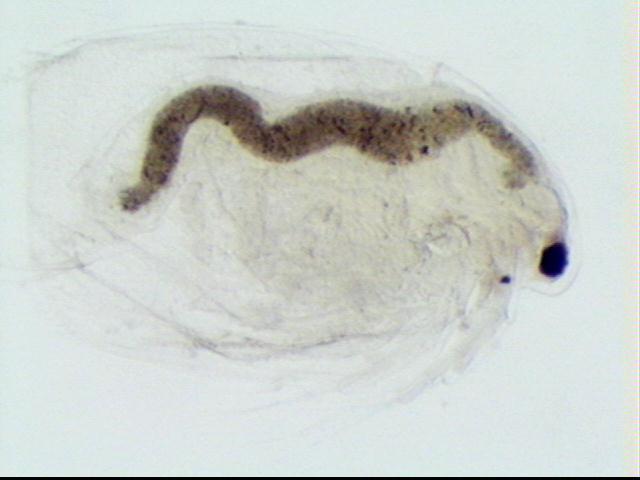
Figure 1. Notice the long second antenna on the ventral side, these appendages are used to move Simocephalus through the water. Also notice the digestive track, located on the dorsal side, which is darkly pigmented due to the presence of food. 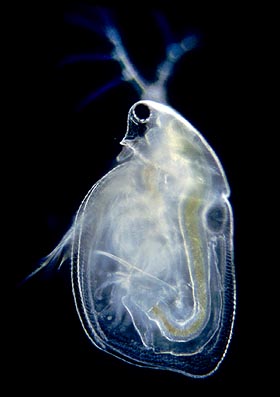
Figure 2 Simocephalus vetulus in dark field. The heart is visible in this photo as the dark oval to the right of the digestive track which is shown in green. The object seen above the head which looks like it is attached to the head is actually the second antenna which is pinned under the body. (photo by Wim van Egmond, Water Fleas) 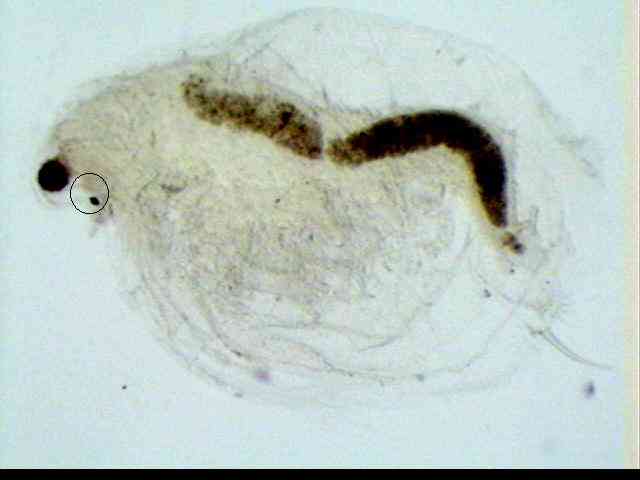
Figure 3 Simocephalus sp. The circle is surrounding the ocellus, a small light sensing organ, which adds to the visual ability of the compound eye. Also notice that the head is surrounded by a hood, an extension of the carapace. 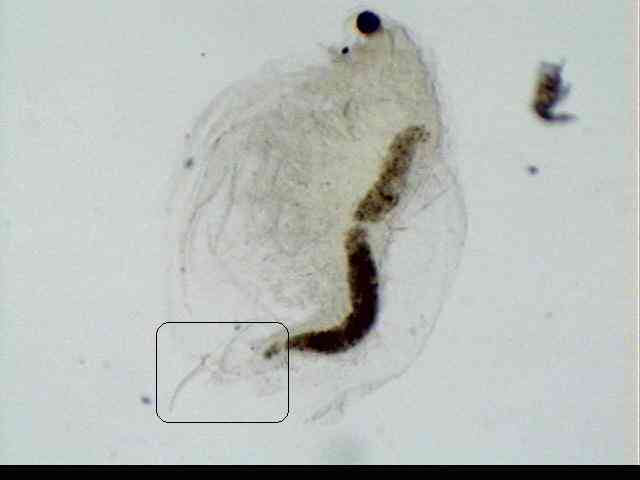
Figure 4 Simocephalus sp. The rectangular area is surrounding the large post-abdominal claw. The pectin on this structure are used to disguish between the species of the genus. |
Works Cited Balcer, M.D.; Korda, N.L.; and Dodson, S.I.. Zooplankton of the Great Lakes. University of Wisconsin Press. Madison, WI. 1984 Cole, Gerald. Textbook of Limnology. The C.V. Moshy Company. St. Louis, MO. 1983 Frey, David. Limnology in North America. The University of Wisconsin Press. Madison WI 1966 Goldman, Charles and Alexander Horne. Limnology. McGraw-Hill Book Company. St. Louis. 1983. pg. 237 Lampert, Winfried and Ulrich Somner. Limnoecology: The Ecology of Lakes and Streams. Oxford University Press New York 1997 Parmentier, Jan and Wim van Egmond. Water Fleas. http://www.microscopy-uk.org.uk/mag/artjun99/wflea.html. 2001 Thorp, James and Alan Covich. Ecology and Classification of North American Freshwater Invertebrates. Academic Press Inc. Boston MA. 1991 |
